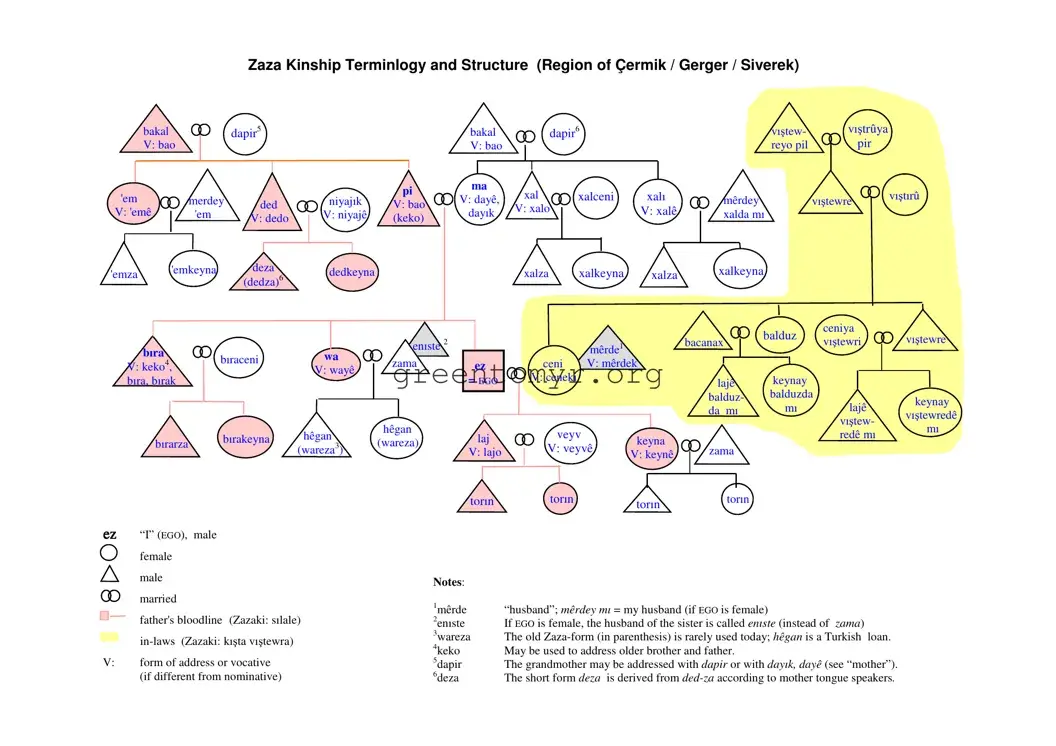The Kinship Tree Diagram form serves as an invaluable tool for understanding the intricate family structures and relationships within Zaza society, particularly in the regions of Çermik, Gerger, and Siverek. This form details a variety of kinship terms that define family connections, emphasizing the unique aspects of lineage that are crucial to cultural identity. Zaza kinship is distinctly patrilinear, meaning that lineage is traced exclusively through the father's line, which shapes familial relationships and societal roles. For instance, individuals on the mother's side are often considered in-laws rather than blood relatives. Key terms highlighted in the diagram illustrate not just direct familial relationships—such as those between parents, children, and siblings—but also the terminology surrounding extended kin and respectful address. Importantly, the birth of a son is celebrated within this cultural framework since it guarantees the continuation of the paternal lineage. The diagram also underscores societal norms around marriage, where individuals typically seek partners from within their own bloodline, influencing group dynamics and clan strength. As family structures evolve and modern influences permeate the community, insights from the Kinship Tree Diagram form provide a window into the distinct traditions and values that have shaped Zaza identity over generations.


